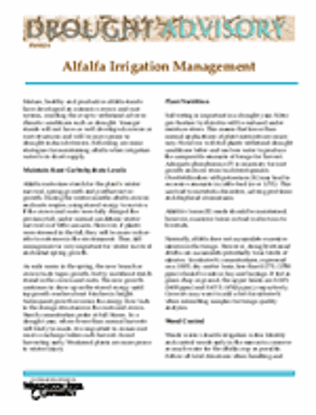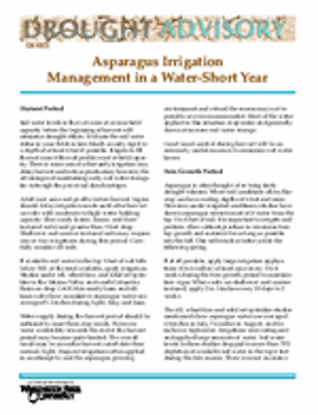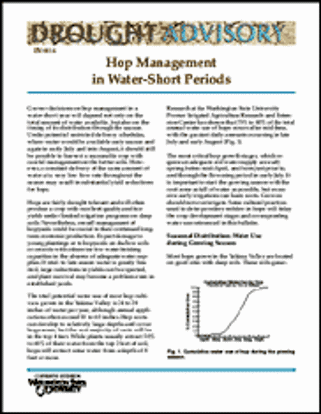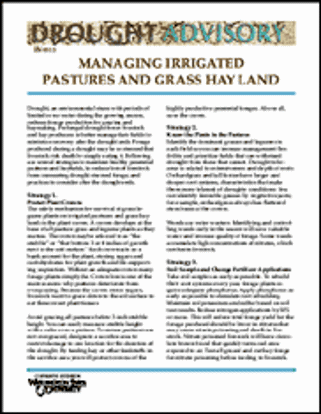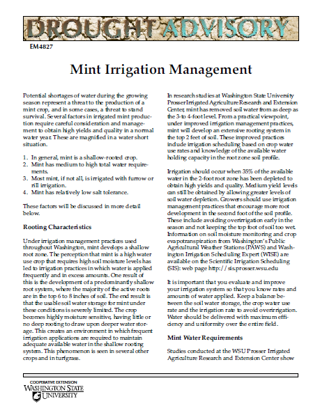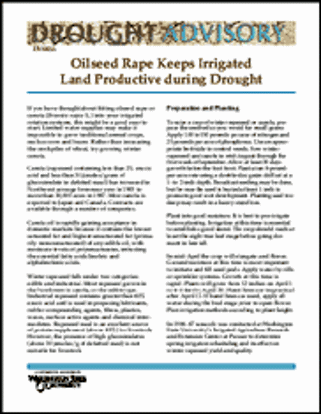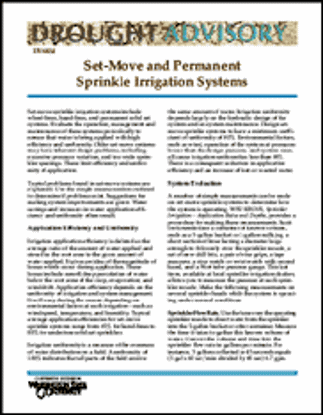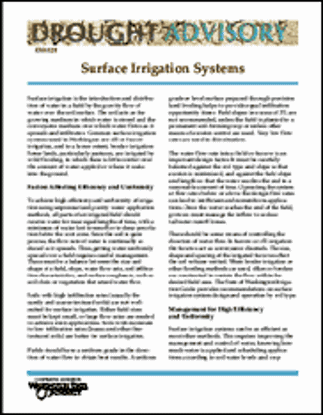You have no items in your shopping cart.
Irrigation and Water
Irrigation and Water
WSU Drought Advisory: Alfalfa Irrigation with Reduced Water Supplies
Alfalfa grown for forage in the arid Northwest requires 1.8-acre feet to 3.2-acre feet of water per year, depending on length of the growing season. This drought advisory recommends steps to take in l ...
$0.00
WSU Drought Advisory: Asparagus Irrigation in a Water-Short Year
The primary water absorption root zone for asparagus is down three to four feet in irrigated fields. Fill root zone early when water is short. Weed control becomes especially important in a drought ye ...
$0.00
WSU Drought Advisory: Hop Management in Water-Short Periods
Hop plants are fairly drought resistant. Author offers measures to ensure greater success under dry conditions. Discusses factors influencing some cultivars and water and fertilization patterns for di ...
$0.00
WSU Drought Advisory: Irrigation System Evaluation
This drought advisory bulletin lists methods of evaluating how much water a sprinkler system can deliver in a given amount of time, to help farmers schedule irrigation scientifically for maximum use o ...
$0.00
WSU Drought Advisory: Managing Irrigated Pastures and Grass Hay Land
Drought-stressed hay and forage can be higher in nitrates than usual. Prevent overgrazing to protect the pasture, and test cut hay and forage for nitrate levels to protect your livestock. Authors offe ...
$0.00
WSU Drought Advisory: Mint Irrigation Management
This drought advisory bulletin discusses the water requirements of mint. Since mint needs water all summer and has a shallow root system and low salt tolerance, growers have to focus on getting maximu ...
$0.00
WSU Drought Advisory: Oilseed Rape Keeps Irrigated Land Productive
This drought advisory bulletin discusses the cultivation, irrigation, and harvest needs of oilseed rape or canola as a rotation crop during drought years. Rape is a good alternative crop because most ...
$0.00
WSU Drought Advisory: Set-Move and Permanent Sprinkle Irrigation Systems
This drought advisory bulletin discusses evaluation of set-move and permanent sprinkle irrigation systems for efficiency and water conservation. Includes uniformity, pressure, nozzle inventory and wea ...
$0.00
WSU Drought Advisory: Surface Irrigation Systems
Helps optimize your usable water appropriation using gravity flow. Presents the most efficient slope rates for open systems, gate and valve operation, reducing tailwater runoff, lining the ditches, an ...
$0.00

